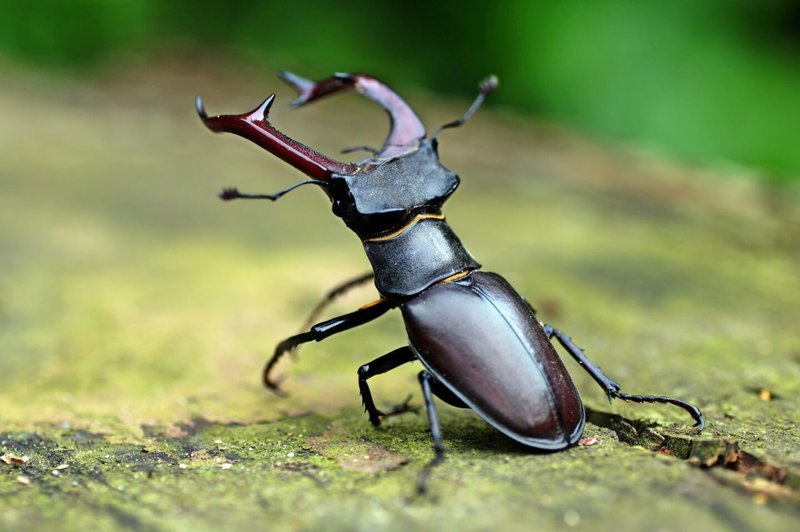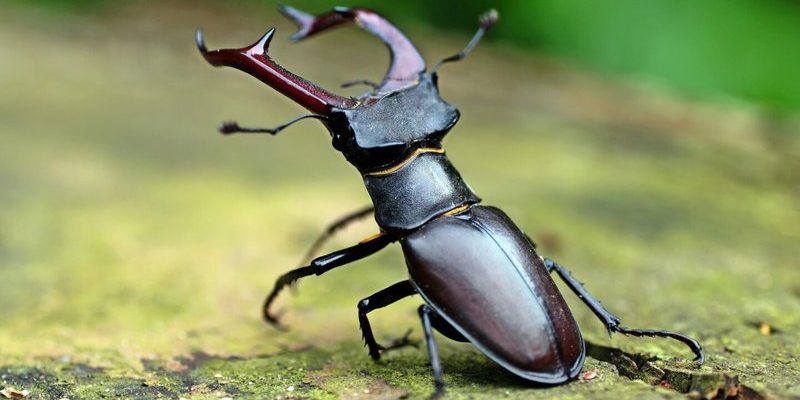
Let’s delve into the evolution and history of stag beetles. Understanding these creatures is like piecing together a natural puzzle. Each piece tells us something about their past, their adaptations, and even their interactions with humans. So grab your coffee, and let’s get started!
What Are Stag Beetles?
Stag beetles belong to the family Lucanidae, which includes over 1,000 species worldwide. Named for their large mandibles that resemble the antlers of a stag, these beetles display an incredible range of sizes and colors. The males typically sport larger jaws compared to females, which helps them in their mating rituals—think of it as a display of strength during courtship.
These beetles are usually found in wooded areas where they thrive in decaying wood, which provides them with food and shelter. They are primarily nocturnal, meaning you’re more likely to see them at night. When you spot a stag beetle, it’s hard not to be intrigued by its unique features and charismatic demeanor.
The Evolutionary Journey of Stag Beetles
Stag beetles have a rich history that dates back over 100 million years. Evidence of their ancestors has been found in amber fossils, indicating they have existed since the time of the dinosaurs. Isn’t that wild? This long evolutionary journey has seen them adapt to a variety of environments, allowing them to thrive in many ecosystems.
Scientists believe that the dramatic size and shape of their mandibles evolved primarily for mating and competition among males. These adaptations make the larger males more attractive to females. It’s a classic case of “survival of the fittest.” The bigger the mandibles, the better the chances of winning over a mate, which has led to the impressive stag beetles we see today.
Species Diversity and Distribution
There are over 1,200 known species of stag beetles, ranging from the common European stag beetle to the more exotic horned stag beetle found in tropical rainforests. Each species has adapted to its unique environment, leading to a variety of appearances and behaviors.
For example, some species are brightly colored while others are more subdued in their hues. The differences don’t stop at looks; some beetles are larger than others, with certain species reaching up to 15 centimeters in length! This incredible diversity is a testament to their adaptability and resilience as a species.
Stag Beetles and Their Role in the Ecosystem
Stag beetles play a crucial role in their ecosystems. They help break down decaying wood and organic matter, recycling nutrients back into the soil. This process is essential for maintaining healthy forest ecosystems. By doing this, stag beetles contribute to the overall health of their environments.
Moreover, these beetles serve as prey for various birds and small mammals. Their presence in the food chain highlights their importance in the broader ecological network. So, the next time you see one, remember that it’s not just a cool bug; it’s part of a larger system!
Human Interaction with Stag Beetles
Historically, stag beetles have fascinated humans for centuries. In ancient cultures, they were often seen as symbols of strength and courage. Some societies even used their jaws as tools or in traditional medicine. Today, stag beetles are popular among collectors and hobbyists, and they’re often kept as pets.
However, they face threats from habitat loss and climate change. Urban development often destroys their natural habitats, leading to declining populations. Many areas have initiated conservation efforts to protect these unique creatures and their habitats. It’s a reminder that while they’re fascinating, stag beetles need our help to thrive.
Conservation Challenges and Efforts
As enchanting as stag beetles are, they’re not without their problems. The loss of their natural habitats due to deforestation and urbanization poses a significant threat. Many species are now classified as endangered or vulnerable. It’s like losing a page of a beautiful story—each beetle represents a part of our natural history that we can’t afford to ignore.
Conservationists are working hard to raise awareness and protect these beetles. Efforts include habitat restoration, creating awareness campaigns, and even legal protections in some regions. It’s crucial for all of us to support these initiatives, whether through advocacy or simply by appreciating and understanding these creatures more.
The saga of stag beetles is rich with history, evolution, and interaction with humans. As we’ve seen, they’re not just bugs; they’re vital parts of our ecosystems with intriguing stories of survival and adaptation. Their evolution teaches us about the incredible resilience of life on Earth and reminds us of our responsibility to protect it.
So, the next time you encounter a stag beetle, take a moment to appreciate its beauty and the journey that brought it to your sight. It’s a tiny reminder of the wonders of nature and the delicate balance that sustains it. Together, we can help ensure that these magnificent creatures continue to thrive for generations to come.

